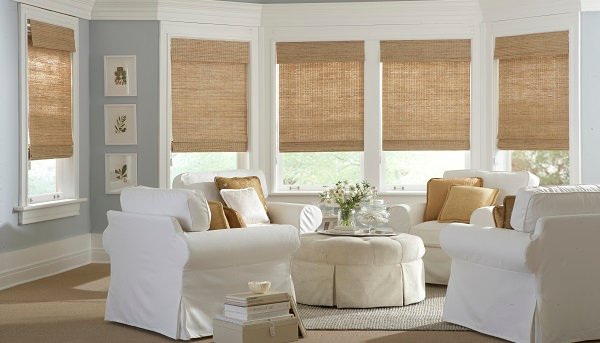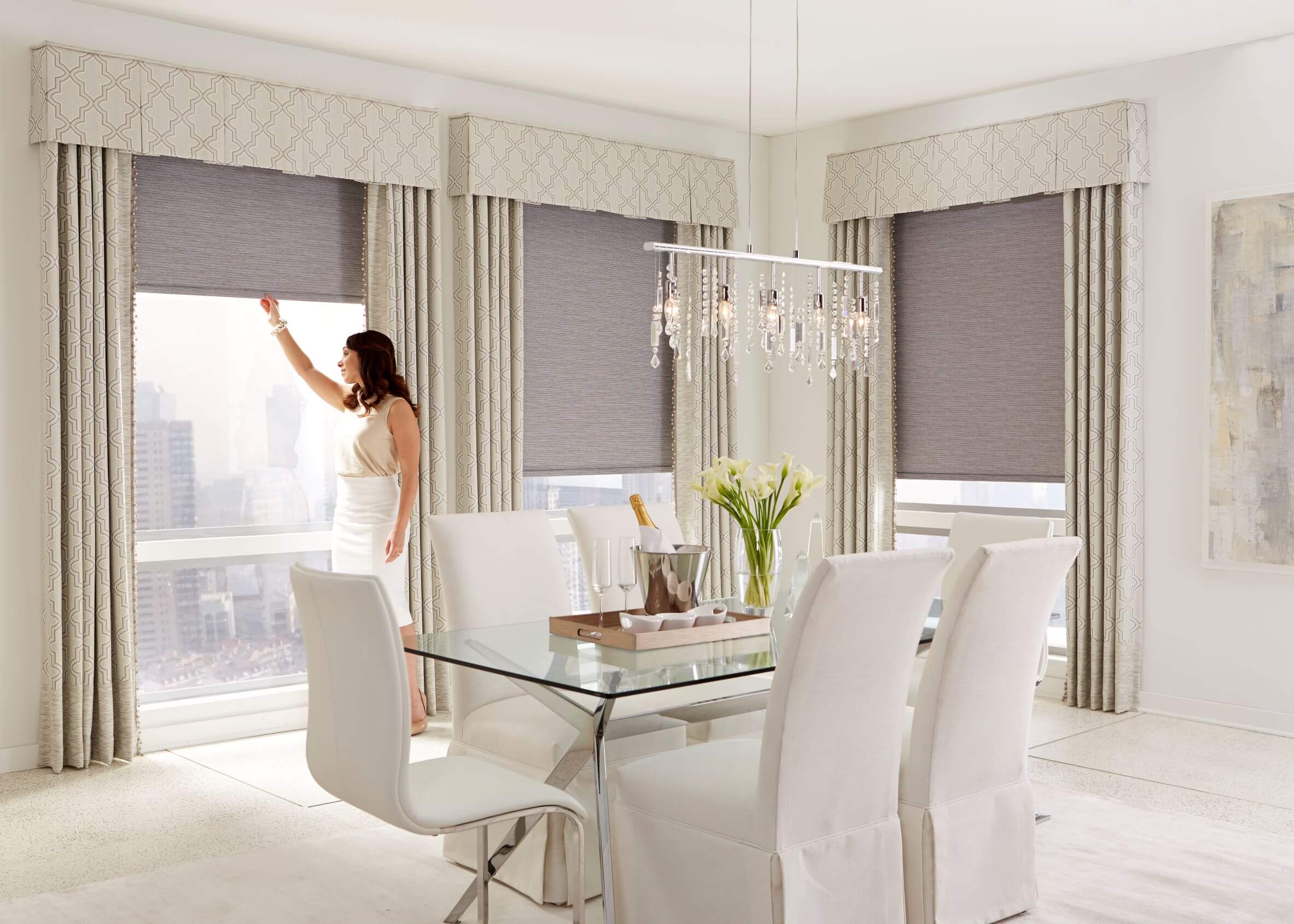The Ultimate Guide to Blinds: Types, Advantages, and Selecting the Right Suitable For You
The world of window treatments is vast and differed. Blinds come in countless styles, each offering unique benefits for different settings. Recognizing these choices is important for making notified decisions. Furthermore, variables like product option and area capability play a substantial duty. As one takes into consideration the excellent equilibrium between appearances and functionality, the subtleties of measuring and maintaining blinds also emerge as crucial elements. What should one prioritize when picking the perfect home window option?
Kinds of Blinds: A Detailed Review
Blinds work as both aesthetic and useful components in interior decoration, offering different alternatives to suit varied choices and needs. Among one of the most prominent kinds are Venetian blinds, defined by horizontal slats that can be changed for light control and privacy. Roller blinds, recognized for their simpleness and flexibility, come in a series of patterns and materials, making them suitable for traditional and contemporary setups. Vertical blinds, generally used for larger home windows or gliding doors, permit easy adjustment and are usually made from fabric or vinyl.
Roman blinds, with their classy folds up, add a touch of refinement to any space, while cellular shades provide insulation and energy effectiveness. Additionally, bamboo blinds provide a natural, environmentally friendly option, infusing rooms with heat. Each type has special attributes and styles, ensuring home owners can find the perfect suitable for their certain décor and functional needs.
Benefits of Setting Up Blinds in Your Home
The installation of blinds in a home provides a number of considerable benefits. They give enhanced personal privacy control, enabling property owners to manage presence from the exterior. Furthermore, blinds add to power efficiency by assisting to take care of interior temperature levels, decreasing the dependence on heating and cooling down systems.
Enhanced Privacy Control
Installing blinds uses a substantial advantage in privacy control when house owners seek to enhance their living areas. Blinds offer a versatile remedy for controling visibility from both the exterior and interior of the home. By changing the slats or increasing the blinds, individuals can easily take care of the amount of light getting in while all at once blocking the view from outdoors. This adaptability allows house owners to create a comfy environment without compromising natural light. Additionally, different styles and products are offered, making sure that property owners can choose choices that effortlessly mix with their decor while enhancing personal privacy. Inevitably, the setup of blinds serves as an effective methods to protect individual room, motivating leisure and comfort within the home setting.
Energy Effectiveness Renovation
Setting up blinds not just enhances personal privacy but also considerably adds to energy performance in the home. By managing natural light and minimizing heat transfer, blinds can aid maintain a constant interior temperature. During warmer months, shutting blinds can obstruct out excessive sunlight, thus reducing the reliance on cooling. On the other hand, in cooler months, they can offer insulation by capturing warmth, lowering heating costs. In addition, energy-efficient blinds, such as cellular shades, are designed specifically to minimize power loss. By spending in top quality blinds, homeowners can create a more comfy living setting while additionally lowering power bills. Eventually, the installation of blinds works as a sensible remedy for those looking for to boost both comfort and energy performance in their homes.
Exactly how to Select the Right Blinds for each and every Area
Exactly how can one establish one of the most appropriate blinds for each space in a home? The choice process starts with assessing the space's function and setting. In living areas, functional blinds that enable light control while guaranteeing privacy are perfect. In bedrooms, power outage blinds can improve sleep top quality by blocking out outside light.
Bathroom and kitchens require moisture-resistant choices to stand up to moisture, making vinyl or fake wood blinds suitable options. In addition, the desired visual plays a crucial role; collaborating blinds with the space's style boosts the total atmosphere.
Consider the quantity of natural light each area receives; lighter blinds might be better for dark spaces, while darker choices can add heat to sunlit rooms. Eventually, comprehending particular needs and choices for performance and style will assist home owners in making educated choices tailored per room's unique requirements.
Material Options: Wood, Plastic, Fabric, and Much more

Wood Blinds Advantages
Timber blinds are a prominent option among house owners seeking a blend of looks and performance. One considerable benefit of timber blinds is their all-natural charm, providing a cozy and inviting look that enhances any type of indoor design. They are available in various coatings and shades, enabling for customization to match individual style. In addition, timber blinds offer superb light control and personal privacy, as their slats can be easily adapted to filter sunlight while maintaining seclusion. Their longevity is one more advantage; with correct care, timber blinds can last for several years without losing their charm (Phoenix shades installation). Moreover, they have shielding buildings, helping to regulate indoor temperature levels and potentially decreasing energy expenses. On the whole, timber blinds merge style and usefulness, making them a perfect selection for lots of homes
Vinyl Sturdiness Features
Plastic blinds stand apart for their extraordinary toughness, making them a functional choice for different environments. These blinds are resistant to dampness, making them suitable for areas such as bathroom and kitchens where moisture can be an issue. Unlike timber, vinyl does not warp, fracture, or fade under sunlight, making sure lasting efficiency and very little upkeep. Furthermore, they are available in a selection of styles and shades, permitting property owners to customize their appearance without compromising sturdiness. Plastic blinds are likewise very easy to tidy; a straightforward wipe with a moist fabric is often enough to keep them looking fresh. Generally, their resilience and low upkeep make vinyl a preferred option among property owners seeking both performance and visual appeal.

Material Choices Overview
Blinds come in a variety of fabric choices that satisfy different visual and useful demands. Typical materials consist of fabric, timber, and plastic, each offering distinct advantages. Timber blinds give a traditional, cozy aesthetic and superb insulation yet require maintenance to stop bending. Plastic blinds are long lasting and moisture-resistant, making them ideal for high-humidity locations like bathroom and kitchens. Material blinds, offered in many shades and patterns, offer convenience and gentleness, index boosting home design while providing differing degrees of light filtering. In addition, options like synthetic timber supply the appearance of natural wood with included durability. When picking blinds, it is crucial to examine the specific requirements of each room to assure peak performance and style.
Determining and Mounting Blinds: Tips for Success
Although gauging and setting up blinds may appear straightforward, mindful attention to detail is necessary for accomplishing an ideal fit. It is necessary to gauge the window structure precisely, keeping in mind both the size and elevation. For within places, subtract a percentage from the width to guarantee a clean fit, while outdoors installs need to expand past the frame for better light control and appearances. Utilizing a steel measuring tape is advised for precision.
When installing, gather all required devices, such as a degree, drill, and screws. Complying with the supplier's directions is crucial to guarantee appropriate setup. It is recommended to pre-drill openings to avoid harming the braces. Furthermore, having a second person can make the process smoother, particularly when raising much heavier blinds. After setup, examination the blinds to validate they operate efficiently and change as essential for optimum functionality.
Upkeep and Care for Lasting Blinds
Appropriate maintenance and treatment can greatly expand the lifespan of home window treatments. Regular dusting is important; making use of a soft cloth or a microfiber duster can efficiently eliminate dust without scratching surfaces. For deeper cleaning, a mild solution of soap and water is advised, applied with a soft sponge, assuring that no moisture leaks right into the mechanisms.
For material blinds, area cleaning is a good idea, while wooden blinds need to be treated with a wood-safe cleaner to keep their surface. Stay clear of revealing blinds to extreme dampness, heat, or direct sunshine, which can cause bending or fading.
Furthermore, routine inspection of devices and cables can stop wear and tear. It's a good idea to comply with producer wide curtains standards for specific materials, as various blinds may have distinct care requirements. By embracing these straightforward upkeep practices, home owners can assure their blinds stay useful and cosmetically pleasing for several years ahead.
Frequently Asked Concerns
Can Blinds Aid Reduce Power Costs in My Home?
Blinds can effectively decrease power expenses in a home by giving insulation, obstructing warm during summer, and retaining heat in winter season. Their capability to control light and air circulation boosts energy performance throughout the year.
Exist Child-Safe Options for Blinds?
Yes, there are child-safe alternatives for blinds. These include cordless layouts, retractable cords, and safety and security gadgets that eliminate dangling cords, guaranteeing a safe and secure setting for kids while preserving performance and aesthetic charm in homes.

How Do Blinds Compare to Drapes or Shades?
Blinds typically provide a lot more specific light control and area performance than curtains or tones. Phoenix blinds. They are frequently simpler to keep and cleanse, while curtains give a softer visual, and tones can provide differing insulation benefits
Can I Customize the Design And Color of My Blinds?
Yes, blinds can a fantastic read be personalized in both color and layout. Various manufacturers supply a wide variety of options, permitting customers to choose products, patterns, and shades that suit their individual visual and home design.
What Is the Typical Life Expectancy of Various Kinds of Blinds?
The average life-span of blinds varies: wood blinds last 5-10 years, faux wood 7-10 years, aluminum 5-10 years, and fabric shades around 5 years, depending on maintenance, exposure, and use to sunlight.
Kitchen areas and bathrooms call for moisture-resistant options to endure humidity, making plastic or artificial wood blinds ideal options. Wood blinds use all-natural charm and warmth, while vinyl supplies resilience and simplicity of maintenance. One significant benefit of timber blinds is their natural elegance, supplying a warm and inviting appearance that boosts any type of indoor style. Additionally, wood blinds give exceptional light control and personal privacy, as their slats can be easily readjusted to filter sunshine while keeping privacy. For fabric blinds, area cleansing is recommended, while wooden blinds should be treated with a wood-safe cleaner to keep their surface.